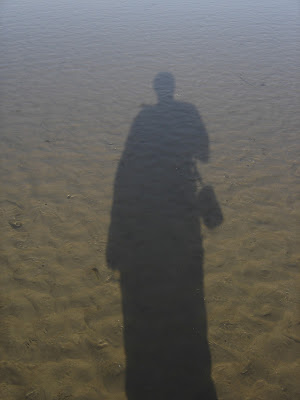I miss the Terracotta Man
The Terracotta Man was the colour of a plant pot. He was the shape of a Buddha, who has meditated his way out of the lotus position, in favour of something less taxing on the spine – a semi-reclined pose on a sun lounger. His true age was indeterminate, lost somewhere within the soft folds of his morbid obesity. As a broad estimate, I venture that he was between 60 and 80 years old.
His only concession to the social nicety of clothing were a pair of pale-blue shorts and a white strip across the bridge of his nose, that was supposed to protect it from sunburn, though it only covered a small cross-section. During the summer, he was a fixture on the angled balcony of his ground-floor, seafront flat, facing perpetually towards the east, in readiness for the next sunrise. His first outdoor appearance heralded the onset of Summer. His departure, usually sometime during September, marked the end of the season.
One day, as I walked past the low-rise block where the Terracotta Man lived, I noticed new furniture on his balcony – a duo of matching chairs angled toward a dainty table, just large enough to accommodate a pair of coffee cups. The patio doors were slightly open. Beyond the plate glass, I could see two elderly women milling around inside, giving off the air of people who have recently colonised an unfamiliar space.
I never saw the Terracotta Man again. The summer, that was once measured by his presence, has continued to come and go in his wake. I do not know his name and, in a way, it seems inconsequential. His seasonal lethargy was symbolic; illustrative of something that was greater than the individual. It marked the passing of those months when the sun attains its glorious zenith, when the pavements are hot and the beaches are crowded. I still think of him whenever I walk along the seafront, which is often.
Recently, I find that I can no longer pinpoint the block of flats where the Terracotta Man lived. I know the general area, and that it was the last ground-floor apartment on the east side of the building. My memory of him has decayed to a point where even the position he occupied in the universe is uncertain. The passage of time has slowly transitioned him, from the seemingly fixed reality of his physical existence, to an abstraction within my personal mythology.
My immediate family have lived in this town for many generations. Those who remained here, once they came of age, dug garden ponds, laid patios, and planted and uprooted trees, all with their own hands. They left their temporary mark on the landscape.
Over time we have dwindled in number. My siblings have moved away. They have gone on to raise families in other parts of the United Kingdom. All that remains of our potted dynasty in this locale are my ageing parents and myself, in a three-horse race to the finish line. A while ago I developed one of those fence-sitting chronic illnesses, with a downward progressive arc that defies treatment and only ends badly. I will not have any children of my own, or get married, or extract myself, in any meaningful way, from the solipsism that has become my preferred operating state.
When the last of us is gone, the long chapter of our family's history in this town will be brought to a close. Like the Terracotta Man, we will be replaced by different faces and by different surnames. The graves of those loved ones who we buried will be left untended. The houses we occupied will be knocked down, or renovated beyond all recognition. The few who remember us may, in time, find it hard to recall where exactly we lived, as we, in our precariously short afterlife, embark upon our own gradual fade from the ebbing realm of living memory.




Comments
Post a Comment